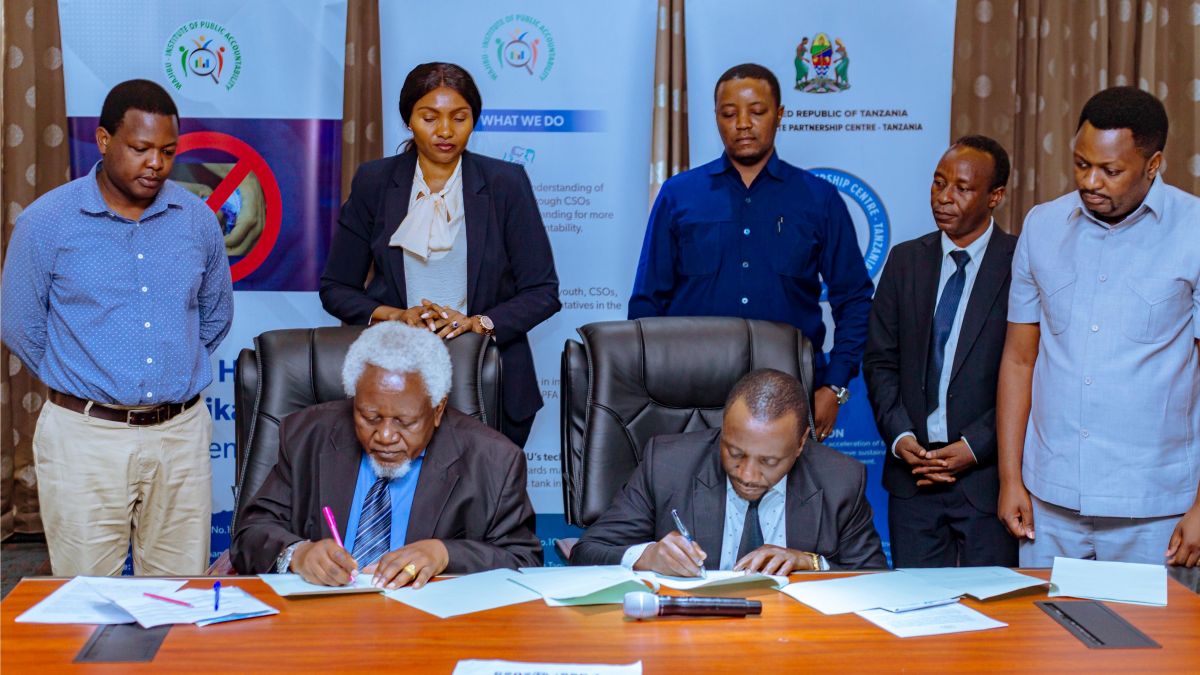Fixing Tanzania's Local Government PPP Projects Through Strategic Fiscal Reforms
Authored by Dr. Bravious Felix Kahyoza (PhD, FMVA) and Amran Bhuzohera, this groundbreaking research paper examines the critical budgetary deviations, implementation challenges, and allocation inefficiencies plaguing Local Government Authority (LGA)-initiated Public-Private Partnership (PPP) projects in Tanzania from 2021/2022 to 2024/2025.
With 184 local councils serving as the primary initiators of PPP projects under the PPP Act of 2010 (amended 2023), these decentralized partnerships are essential for delivering infrastructure and services in housing, transportation, water, and health. However, the paper reveals that persistent fiscal constraints and institutional bottlenecks have undermined the PPP model's potential, threatening Tanzania's ability to meet its Development Vision 2025 goals.
Key Findings and Insights
- Massive budgetary shortfall: Across 32 analyzed LGA-led PPP projects, the total budgetary deviation reached 35.4% (TZS 6.53 trillion), with actual allocations totaling only TZS 11.92 trillion against planned budgets of TZS 18.45 trillion.
- High implementation shift rates: A staggering 56% of projects shifted away from the PPP model to traditional public funding or hybrid arrangements, primarily due to funding gaps (42%), regulatory delays (28%), and private sector reluctance (17%).
- Below-threshold allocations: The average allocation percentage stood at just 64.6%—falling short of the 70% viability threshold needed for sustainable PPP implementation. Health sectors were hit hardest with only 60.3% allocation, while transport managed 65.2%.
- Sectoral disparities: Social sectors like health (39.7% deviation) and education (37.5% deviation) faced the worst funding gaps, while flagship infrastructure projects in transport and energy received relatively better allocations due to national priority status.
- Fiscal federalism constraints: LGAs receive only 20% of national revenue through formula-based transfers (TZS 1.36 trillion in 2024/25), severely limiting their capacity to commit matching funds for PPP projects—well below the East African average of 40%.
- Peak crisis period: The fiscal year 2023/24 saw the highest deviation rate of 47.4% and shift incidence of 67%, driven by post-COVID inflation (4.2% CPI), rising interest rates (15%), and global economic shocks.
Policy Gaps and Opportunities
While Tanzania's Third National Five-Year Development Plan (FYDP III) for 2021/22–2025/26 and the National PPP Policy (2023) provide a robust legal and strategic framework, implementation gaps persist—particularly in sub-national fiscal allocation, procurement efficiency, and risk-sharing mechanisms.
Key structural constraints include:
- Severe under-allocation to LGA-initiated projects compared to national infrastructure priorities.
- Procurement approval delays averaging 9 months through the PPP Centre, discouraging private investor confidence.
- Limited LGA institutional capacity, with 70% of councils lacking adequate procurement and financial management expertise.
- Weak risk-sharing frameworks that fail to attract private sector participation, especially in social sectors.
Policy Recommendations
To unlock the transformative potential of LGA-led PPPs and save an estimated TZS 2.61 trillion through private sector leverage, the paper proposes a comprehensive reform agenda:
- Ring-Fenced LGA Transfers: Earmark 25% of the annual development budget (e.g., TZS 1.41 trillion from 2025/26's TZS 5.65 trillion) exclusively for PPP matching funds, prioritizing high-deviation sectors like health and water to raise allocations to 75%.
- Fast-Track Regulatory Approvals: Implement a digital approval portal through the PPP Centre with a 6-month cap on procurement processes, reducing regulatory delays by 30% and increasing project retention rates by 20%.
- Sector-Specific Investment Incentives: Offer 10-year tax rebates for private investors in energy, water, and health PPPs to counter risk aversion and attract 20% more private capital into underserved sectors.
- Mandatory Capacity-Building Programs: Establish compulsory training in procurement, risk assessment, and financial management for 70% of LGA councils (approximately 129 councils), funded through the Local Government Capital Development Trust Fund at TZS 500 billion annually.
- Tripartite Oversight Mechanism: Create collaborative monitoring structures involving the Ministry of Finance, PPP Centre, and LGAs with annual performance audits aligned to FYDP III metrics, ensuring transparency and accountability.
Conclusion
Tanzania's Local Government Authorities hold immense potential as drivers of decentralized development through PPPs. However, without urgent fiscal reforms and institutional strengthening, the country risks losing trillions of shillings in private sector investment and falling short of its infrastructure development targets.
The authors emphasize that fixing LGA-led PPPs is not merely a budgetary exercise—it is a strategic imperative for inclusive growth, service delivery, and fiscal sustainability. With the proposed reforms, Tanzania can reduce budgetary deviations to 20-25%, increase allocation efficiencies to 75%, and position LGAs as catalysts for the PPP-driven transformation envisioned in Development Vision 2025.
By 2030, with well-implemented reforms, Tanzania could emerge as an East African leader in sub-national PPP governance, demonstrating how decentralized partnerships can bridge infrastructure gaps and empower local communities.
📘 Read the Full Research Paper:
"Local Government-Initiated Public-Private Partnership (PPP) Projects: Analyzing Budgetary Deviations, Allocations, and Implementation Shifts in Tanzania, 2021/2022–2024/2025"
Authored by Dr. Bravious Felix Kahyoza (PhD, FMVA) and Amran Bhuzohera
Published by TICGL | Tanzania Investment and Consultant Group Ltd
🌐 www.ticgl.com
